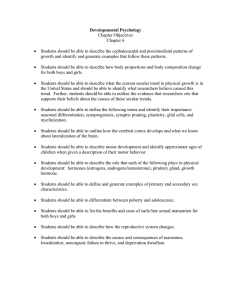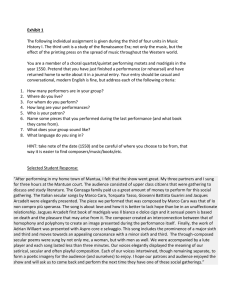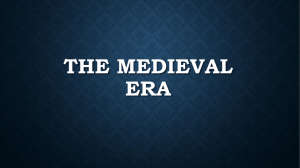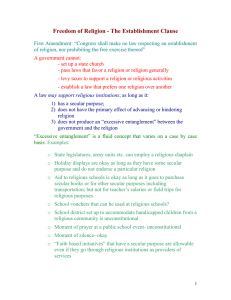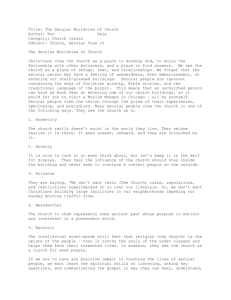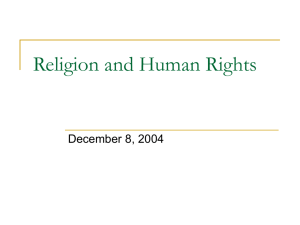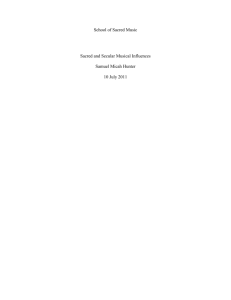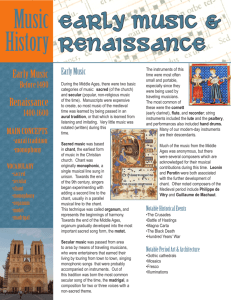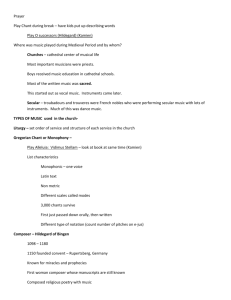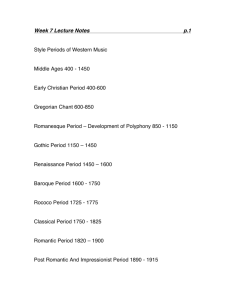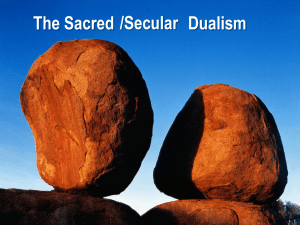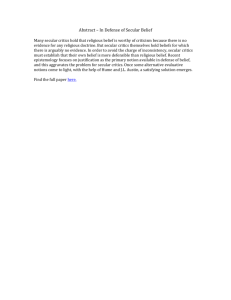Seventh Grade: Medieval Music
advertisement
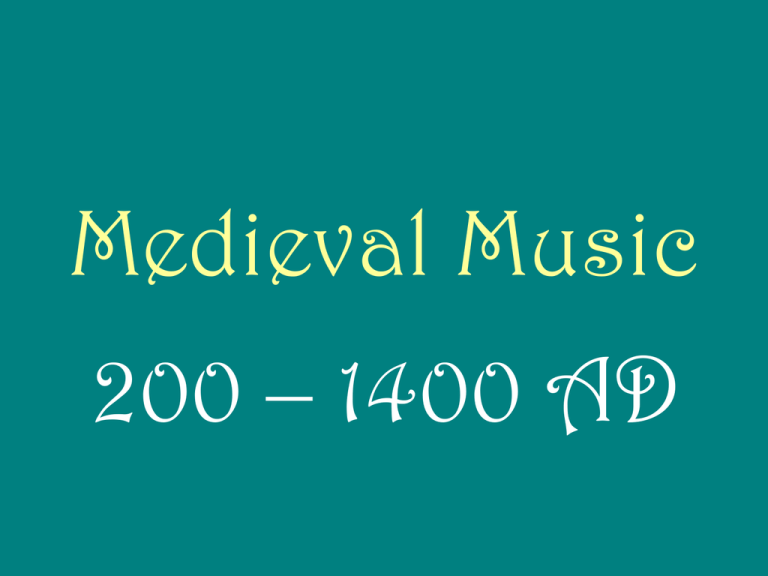
Medieval Music 200 – 1400 AD Historical Events/General Facts • Civilizations become more distinct • 1203 – Genghis Khan begins conquering and pillaging • 1209 – St. Francis of Assisi forms order of brotherhood • 1271 – Marco Polo begins journey to the Orient Historical Events/General Facts • 1337 – Beginning of the 100 yr. war b/w France and England • 1347- Black Death, 75 million people die (1/3 of the world) • 1364 – Aztecs build capital city of Tenochtitlan Music Facts • We begin to divide into different styles of music according to region • Western music (European) develops around 300 AD • The music of the Roman church becomes the basis for Western music Chant • 600 AD Pope Gregory I collected chants and arranged them in the order they are sung today • also called plainchant • notated by Guido d’Arezzo (also created solfege) - staff had 4 lines and square notes Chant • a cappella and unison • sung in Latin, text from Bible • no printing press, 1 large song book for everyone • 900 AD Music became more elaborate and 2 parts develop Sacred vs. Secular • Common themes in secular music • a. emotions – love • b. daily life – farming Sacred vs. Secular • How music was used • a. to express emotions • b. for entertainment • c. to praise God Composers • Anonymous • Perotin • Leonin Guillaume de Machaut • Known as the master of music of his time • He composed music with great variety of style and form to be heard by very important people (royalty). • Composed the first polyphonic (many voices) music of the Mass. • Composed secular love songs Use of Instruments • to imitate voices (sacred) • used for dances (secular) Instruments • lutes – early guitars • harps • strings (cellos, violin) • recorders • dulcimer
